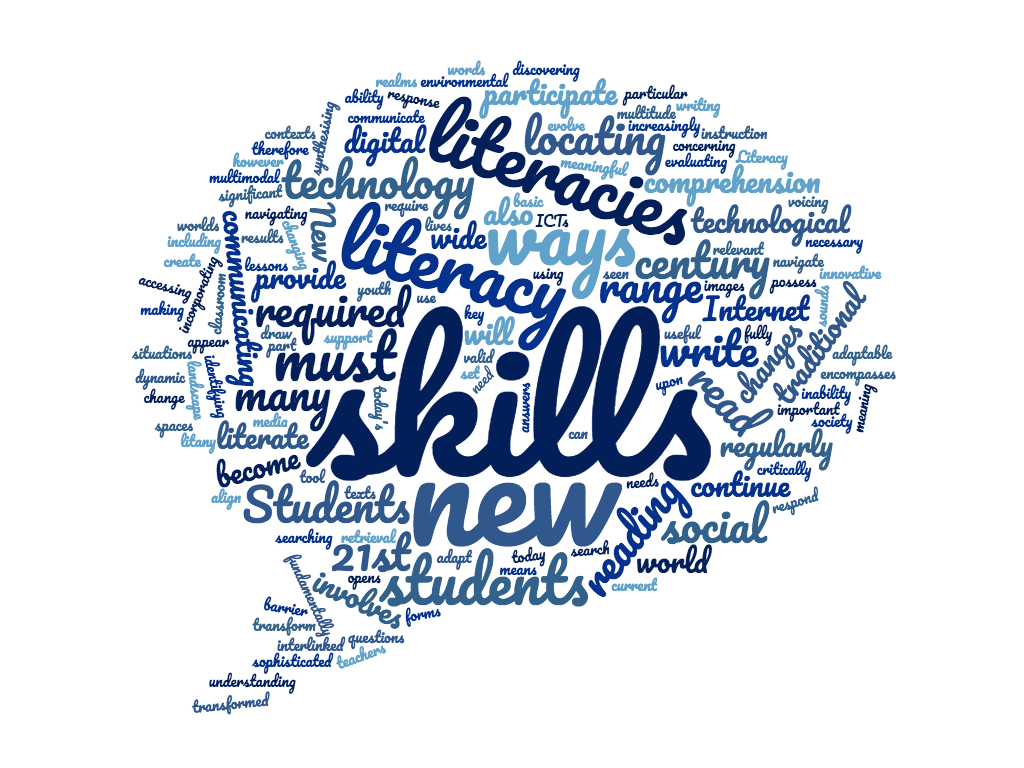
Being literate in the 21st century involves a wide range of skills in a wide range of contexts. Literacy encompasses the ability to participate fully in a range of situations including social and digital realms. It has transformed from the basic skills and understanding of reading and writing, to a tool, which is a means to participate in the technological society of the 21st century (Tompkins, Campbell, Green & Smith, 2015, p. 3). New literacies must respond to changes in the information landscape; therefore, literacy and technology can be seen to be interlinked in many ways. Tompkins, Campbell, Green and Smith (2015) posit technology has, and will continue to, transform literacy instruction. New literacies provide “sophisticated technological ways to read and write multimodal texts incorporating words, images and sounds – that provide opportunities for students to create innovative spaces for making meaning, exploring their worlds and voicing their lives” (Tompkins, Campbell, Green & Smith, 2015, p. 3). To be literate in the 21st century, Tompkins, Campbell, Green and Smith (2015) suggest students must become “proficient in new ways of accessing, comprehending and communicating information” (p. 8). Students must have a litany of skills to draw upon when necessary. These skills align with the traditional information literacy skills; however, students are required to use these in more dynamic and adaptable ways. Leu, Kinzer, Coiro and Cammack (2004) suggest that these “new literacies change regularly as technology opens new possibilities for communication and information” (p. 1). Therefore, with changes in social communication and new forms of media, literacy skills must also adapt. Sweeny (2010) supports this as she states “the current information and communication technologies (ICTs) are fundamentally changing the ways in which youth today read, write and communicate” (p. 121). The key to navigating the new world of literacies are the skills of searching for and locating useful information. Students also need new reading comprehension skills to support the retrieval of valid and meaningful information (Henry, 2006). Henry (2006) states “as new technologies increasingly become a part of classroom lessons, teachers are discovering that many students do not possess the new literacy skills required to successfully read and write with the many new technologies that regularly appear in today’s world” (p. 615). Henry (2006) also suggests a significant barrier to locating relevant information is the inability to successfully navigate search results on the Internet because a particular set of reading comprehension skills are required when using the Internet (p. 615). Students require skills in identifying important questions, locating information, critically evaluating information, synthesising information and communicating answers (Henry, 2006, p. 616). Being literate in the 21st century involves a multitude of skills concerning social, environmental, digital, and traditional literacies and will continue to evolve in response to our information needs.
References
Henry, L. A. (2006). Searching for an answer: The critical role of new literacies while reading on the internet. The Reading Teacher, 59(7), 614-627. Retrieved from https://search-proquest-com.ezproxy.csu.edu.au
Leu, Jr., D. J., Kinzer, C. K., Coiro, J. L., & Cammack, D. W. (2004). Toward a theory of new literacies emerging from the Internet and other information and communication technologies. In N. J. Unrau & R. B. Ruddell (Eds.), Theoretical models and processes of reading (5th ed.) (pp. 1570-1613). Retrieved from http://s3.amazonaws.com/
Sweeny, S. M. (2010). Writing for the instant messaging and text messaging generation: Using new literacies to support writing instruction. Journal of Adolescent & Adult Literacy, 54(2), 121-130. Retrieved from https://search-proquest-com.ezproxy.csu.edu.au
Tompkins, G., Campbell, R., Green, D., & Smith, C. (2015). Literacy for the 21st century: A balanced approach. Retrieved from https://books.google.com.au
[Reflection]